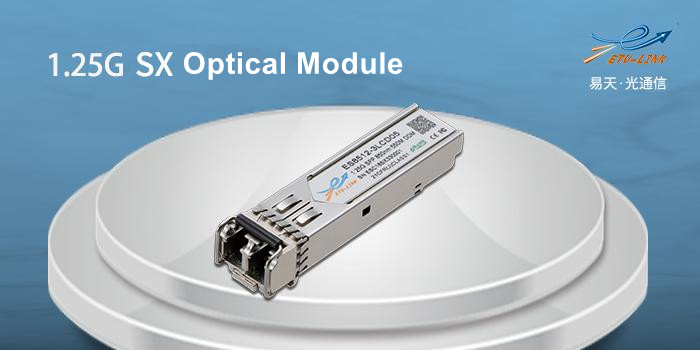
What is the influence of the transmitting power and receiving sensitivity on the optical module?
We need to pay attention to the two parameters of transmit optical power and receiving sensitivity when purchasing optical modules, because these two parameters are one of the key factors to ensure the normal communication of optical modules. Next, ETU-LINK will introduce to you what are the transmitted optical power and the receiving sensitivity? And how to test the optical power of the optical module in the normal range?
Transmitting optical power
ransmitting optical power refers to the output optical power of the light source at the transmitting end of the optical module, which can be understood as the intensity of light, and the unit is dBm.
Receiving sensitivity
Receiving sensitivity refers to the minimum received optical power of an optical module at a certain rate and bit error rate, and the unit is dBm. In general, the higher the rate, the worse the receiving sensitivity, that is, the greater the minimum received optical power, and the higher the requirements for the receiving end of the optical module. Taking into account the increase in link loss caused by fiber aging or other unforeseen factors, the optimal received optical power range is controlled from 2-3dB above the receiving sensitivity to 2-3dB below the overload point.
Examples of the normal range of transmit optical power and receiving sensitivity: 1.25G SFP SX 550m optical module (with a center wavelength of 850nm) has a transmit optical power between -3dBm and -10dBm, and the maximum receiving sensitivity is -18dBm; 1.25G SFP LX 10km optical module (The center wavelength is 1310nm) The transmitted light power is between -9dBm~-3dBm, and the maximum receiving sensitivity is -24dBm.

How to test the transmitting optical power?
Generally speaking, customers can directly monitor whether the transmit optical power and receiving sensitivity of the optical module are normal through the DDM function (digital diagnostic monitoring function) of the optical module. In addition, you can also use the optical power meter to obtain the transmitted optical power value of the optical module. Take the 10GBASE-LR SFP+ optical module as an example, the test steps are as follows:
1. Insert the 10GBASE-LR SFP+ optical module into the SFP+ port of the 10G switch;
2. Use LC-LC fiber patch cord to connect the optical module to the optical power meter;
3. Press the on key to turn on the optical power, press the "λ" key to modulate the band to 1310nm, and the value may change during the test. When the value is still, the test is completed. At this time, the optical power displayed on the screen is the transmitted optical power of the optical module.
In a word, as one of the important parameters that affect the communication quality of optical module, it is very necessary to ensure that the values of transmitted optical power and received sensitivity are in the normal range. Customers not only need to look at these two parameters when purchasing optical modules, but also need to pay attention to other basic parameters, such as transmission rate, distance, wavelength, working temperature, etc. Usually ETU-LINK will test its important parameters before the optical module is shipped to ensure that the quality of the optical module meets the standard.
Categories
New Blog
Tags
© Copyright: 2025 ETU-Link Technology CO ., LTD All Rights Reserved.

IPv6 network supported
Friendly Links:
易天官网